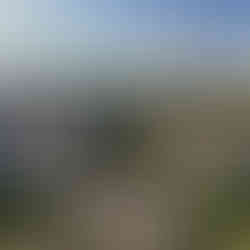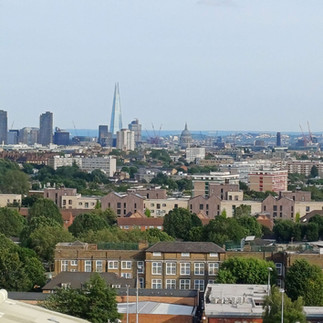Tours of the little known Islington clock tower offer fabulous views.

It may not be one of London's better known attractions, but it is well worth a visit for the panoramic vista, the fascinating and beautiful 19th century clock mechanism and the history of the site's former market.
Check with Islington Guided Walks Eventbrite page for details of Caledonian Clock Tower tours, as the schedule can vary.

The tours cover the history of the tower and park and offer a look at the clock mechanism.
They include climbing the 178 steps of the tower to enjoy breathtaking 360 degree views over London. Although you need to have a reasonable level of fitness to climb the narrow ladder steps, the ascent is divided into five levels and you stop at each floor, so it is not very strenuous.

Caledonian Park in Islington is what is left of the Metropolitan Cattle Market (later called the Caledonian Market), which was opened in 1855 by the City of London Corporation. It replaced the livestock market that had operated for centuries at Smithfield in the City, around two and a half miles to the south.
Smithfield was an open air market that dealt in livestock and also produced meat through on-site slaughter and butchery. In addition to animals for eating, it also sold horses.
When it first started, Smithfield market was in an open field outside the City walls, but, by the mid 19th century, urbanisation had turned it into a central London location. Bringing live animals there through the streets became unsustainable and conditions for the animals were dreadful, so it was closed in 1855.
Smithfield reopened in 1868 solely as a meat market in brand new buildings, which continue to operate to this day (although it is likely to close in the next few years).
Like its predecessor, the new market also combined livestock and slaughter, but it covered a much larger area of 30 acres in what was still a largely rural area.
In spite of its name, the Metropolitan Cattle Market, it also dealt in pigs and sheep.
However, demand for such a market close to the centre of London started to erode fairly soon after it opened.

One factor behind this was that mechanised forms of transport soon led to the collapse in demand for horses, which had been one element of the Caledonian Market.
A more crucial factor was the development of refrigeration technology, which meant that meat no longer needed to be slaughtered and butchered close to where it would be consumed. This could take place further away and the meat could then be transported safely into London.
In addition, this part of Islington became increasingly urbanised in the late 19th century and into the 20th century. This reduced the practicalities of bringing live animals here, even though most of them walked only the short distance from King's Cross or Junction Road railway stations.
Through much of the 20th century, the 'Cally', as it became known, served as a market for bric-a-brac and antiques on days that were not used for livestock and meat.

The cattle market closed in the 1930s and the meat market closed in the 1960s. The bric-a-brac/antiques market moved to Bermondsey in the 1950s.
The Caledonian Market was designed by James Bunstone Bunning, who was the City of London's Surveyor (a title later changed to Architect). It included the clock tower at its centre, sheds (known as lairs) for animals, slaughterhouses and pubs at each of the four corners of the market.
The remaining structures from the Caledonian Market are the clock tower, two rows of iron railings and three of the pubs (The White Horse, The Lamb and the Lion).

The clock tower is a Grade II* listed, while the pub buildings (now flats) and railings are Grade II listed. The railing posts have been heavily plundered for their metal and no longer include the finials depicting the heads of cattle and other animals that were traded here.

The tower is built of Portland stone in an Italianate style, with a square plan in five stages. Its clock, with four faces, was made by John Morris of Clerkenwell, an area once very closely associated with clock and watch makers.

The tower was restored in 2019, with funding from Islington Council and The National Lottery Heritage Fund. The clock, which is wound up once a week, is in perfect working order and its finely engineered mechanism is a wonderful sight.

The restoration project also created a new heritage centre and prompted the opening of the tower for tours for the first time.
The mid-week tour I took on a sunny midsummer evening in June 2023 was a thoroughly enjoyable way to spend 45 minutes or so. The knowledgeable and friendly tour guides, from Islington Guided Walks, ensured that everyone was safe and well informed about the tower and its heritage.
Caledonian Park Clock Tower Gallery
For details of future tours of the Caledonian Park Clock Tower with Islington Guided Walks, please check its Eventbrite page.
Islington Guides also lead tours of St Mary's Church on Islington's Upper Street, which offer equally stunning views over London from its 18th century bell tower.
London On The Ground tours available
My London On The Ground schedule of tours in Islington and the City of London is available here.











































Commentaires